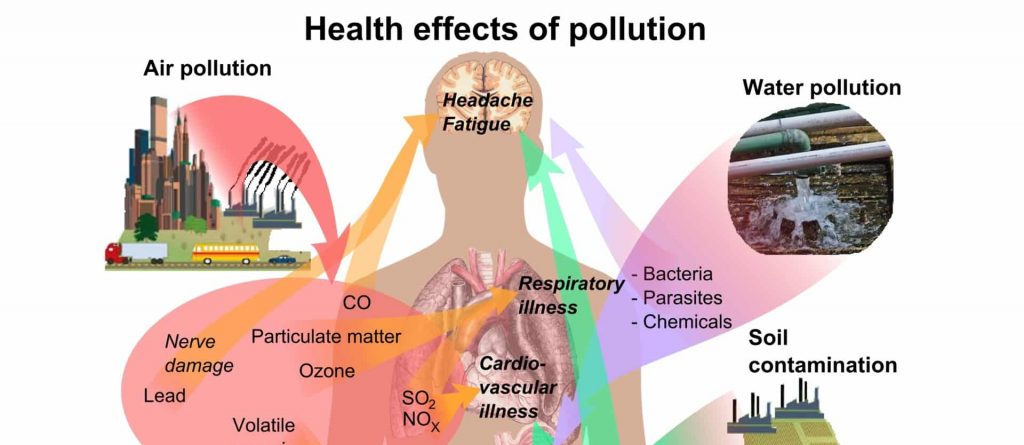
Dioxin – the most powerful poison
Chemically, dioxins are a group of organic substances, based on 4 carbon atoms, 4 hydrogen atoms and 2 oxygen atoms: C4H4O2. This molecule binds to different atoms, depending on the conditions, presence and availability to given circumstances of other atoms. Dioxins are formed by burning chlorine-based chemical compounds with hydrocarbons.
The history of chlorine-based chemical compounds begins in 1900, when American researcher Mr. Down finds how to separate table salt molecules into chlorine atoms and sodium atoms. Initially, chlorine was considered a useless product, but in a relatively short time, in the 1930s, it was discovered how chlorine can be combined with petroleum hydrocarbons, thus generating a lot of new chemical compounds such as solvents pesticides, disinfectants, plastics and others.
These chlorinated compounds, both during the production process and during the burning of the product, releases some toxic substances, including dioxins.
This group of substances, about 200 substances, are produced by major industries, but are also found in nature.
Those found in nature are produced by certain Dysidea dendyi water sponges or Plakortis sponge family; or produced as a result of soil decomposition process, which means lignin degradation (lignin is part of the cell walls of certain plants). They have a strong antifungal effect. Recent pharmacological research recommend using the latter, both for their antifungal potential (there are studies made on vaginal yeast infection – candidiasis) and in treating malaria.
But the largest amount of dioxin is produced by major (big) industries. It’s found in: metallurgy, chemical industry, glass and ceramics industry, power stations, waste incineration, from burning coal and wood, in cigarette smoke, crematoriums and so on.
These substances are not volatile because of their high molecular weight; they are water-insoluble but fat-soluble; they are persistent in the environment and biological systems; they are highly chemically and physically stable. Once released into the environment, they reach the ground and from there enter the human food chain. It’s found in the fat of animals that have been exposed to a source of dioxin.
Dioxins are highly toxic to humans and animals; it’s actually the most powerful poison known to man till date.
This group of substances and their derivatives are regulated by the Stockholm Convention from 22 to 23 May 2001.
Over time, there have been several important cases in terms of population exposure to dioxins, namely:
- A case in Italy
In Seveso, in the Lombardy region of Italy, an environmental disaster occurred, as a result of the release into the atmosphere of about 1 kg of dioxin by a perfume factory. The entire area was evacuated, but it was not enough. Effects were not immediate, but have been devastating for the entire exposed population. The accident affected animals too. Devastating dioxin toxicity has affected hundreds of adults and children; they have suffered irreparable damage.
- Dioxin-contaminated chicken in Belgium (High concentrations of dioxins in chicken meat)
More recently, in 1999, in poultry farms in Belgium were found high concentrations of dioxin in chicken and derivates (eggs). This created panic, both in Belgium and European countries that eat chicken meat. Panic was justified. This crisis has considerably affected the production of chicken in that period, as well as in the forthcoming period. An investigation has been completed and it was found that this incident would have caused 9,000 cases of cancer. But dioxin causes domino effects (chain reactions), which can be felt for generations to come. This is possible as depending on the amount of dioxin absorbed and depending of the effects it has on each person, can cause hereditary diseases, by directly attacking the fetus, or by breastfeeding, or attacking the mother, who will contaminate the unborn child.
That dioxin was discovered by accident. But who knows for how long those farms have been contaminated.
Where do we find these dioxins?
Dioxins are found in the air, in the water and soil. Because it’s initially spread in gaseous form, it can also be stored far from the original emission area. Traces of dioxins were found in Arctic Circle. Traces of dioxin have been found in earth layers preceding a heavily industrialized period. That was possible, as we previously mentioned, due to the decomposition of certain plants in the ground. Given that this substance is usually formed by burning, it’s emanated by car, ship and airplane engines.
In reality, there are 210 known dioxins, which are divided into two groups: 73 dioxins and furans, very similar substances. 17 of them are considered the most dangerous for man and animal. In industry, the synonym used for dioxin is tetraclorodibenzo p-dioxin (TCDD).
TCDD is a white substance, odorless in a solid state, whose melting point is 370°C; it’s stable up to 800°C, fat soluble; it’s resistant to acidic and alkaline environment.
Chemically, dioxin is biodegradable in contact with the ultraviolet rays of the sun, in the presence of the availability in the environment of hydrogen ions (in contact with the foliage of the plants). If it’s absorbed by the ground, connects to the actual organic material, degrading in a few months.
Dioxins get into our food in various ways:
- Breathing: If it’s a significant amount released into the air, as was the case in Italy.
- Through ingestion: from meat and other foods – when the slaughtered animal was exposed to dioxin, as contaminated chicken in Belgium.
- Through the skin.
Studies conducted so far have shown that dioxins tend to accumulate in the fat of beef cattle and dairy cattle, in direct proportion (quantitatively) to the age of the animal.
Human exposure to this substance occurs mainly through the consumption of animal source foods: meat, eggs, milk, farmed fish and so on.
Its effects are:
- The occurrence of certain tumors;
- Eye damage;
- Hereditary diseases;
- Skin conditions;
- Malformed children;
- Cases of endometriosis;
- Growth disorders;
- Neurobehavioral disorders;
- Attacks the reproductive system;
- Affects the immune system;
- The occurrence of chloracne;
Chloracne is the first clinical and pathological related to human exposure to dioxin. It’s characterized by skin rash, similar to adolescent acne. It first occurs on the face, but can be spread throughout the body. The eruption manifests for a very long time, even for several years.
The toxicity of dioxin links to the amount accumulated in the body. This phenomenon is referred to as bioaccumulation or body burden and it’s an estimate of contamination level in the body.
Carcinogenic effects of dioxin has been amply demonstrated, dioxin being labeled as B1 carcinogen substance. Several epidemiological studies have shown the connection between exposure to dioxins and certain forms of cancer, such as soft tissue sarcomas, Hodgkin lymphoma and non-Hodgkin lymphoma (cancers of the lymphatic system), thyroid cancer and lung cancer, liver disease, kidney failure, lesions of the urinary bladder and gastrointestinal damage.
Even if it’s a highly toxic substance, dioxin expresses its dangerousness not in relation accidental exposure and poisoning, but in relation to its accumulation throughout time and its slow action on the human or animal endocrine system. This does not mean we should underestimate accidental exposures, but the highest priority is to monitor cattle and sheep farms, as well as the fodder. Therefore, we should diversify both nutrition and the food source.


